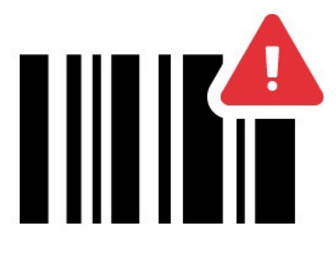Here you can find a list with some of the most frequent questions about the eBay product identifiers and SUPI application.
- FAQ.EN
- 1. What are the product identifiers?
The identifier are codes that you can usually find in the label of the product or as an encrypted image in the barcodes of the articles.
- BRAND
- REFERENCE NUMBER OF THE MANUFACTURER (MPN)
- GLOBAL NUMBER OF COMMERCIAL ARTICLE (GTIN)
- EAN-13
- UPC-A
- ISBN
- 2. Which are the advantages of using the product identifiers?
- They allow the buyers to find faster the products, both on eBay as on Google Shopping.
- They increase the visibility of the ads in the results of the searches on Google Shopping.
- They improve the SEO positioning, getting the attraction of more buyers to the ads.
- 3. Is the EAN national or international?
The EAN is an international number, as an adopted standard all over the world except EE.UU and Canada. The EAN codes are similar to UPC, but the EAN codes have 13 digits. The products on sell out of EE.UU have an standard barcode (EAN), however, the products on sale in EE.UU and Canada need an UPC barcode.
- 4. Where can I find out the EAN of my product on the Internet?
There are websites and API’s external to eBay (http://www.programmableweb.com/api/open-eangtin-database, http://eandata.com, http://www.decept.co.uk/ean-lookup) where you can search EAN codes from titles or descriptions of products. However, they only contain subsets of the total of existing products, so the best alternative is asking for the information to the manufacturer.
- 5. How can I generate an EAN and its cost?
EAN standards are managed by GS1 (formerly known as International EAN) and UCC (Uniform Code Council). If you don’t have yet the EAN of your products, you can generate them on http://www.gs1es.org/ (we recommend you search some information about the associated costs).
- 6. If my product doesn’t have EAN or equivalent, how do I indicate it on eBay’s system?
eBay allows the use of some default values when the EAN or MPN are unknown. In the case of Spain, the value that you should use is “No aplicable”.
- 7. From when is mandatory the insertion of the product identifiers in eBay’s ads?
From 1st March 2016 is mandatory introducing the product identifiers in seller’s ads.
- 8. Does this norm include the identifiers of second hand products?
No, it doesn’t. The norm should be just applicated to new products ads.
- 9. In which eBay categories is mandatory the inclusion of the product identifiers?
- Baby
- Beauty
- Camera & photo
- Home & garden
- DVD & films
- Video games & consoles
- Sporting goods
- Home: Major appliances
- Business & industrial
- TV, video & audio
- Computer & tablets
- Musical Instruments and Gear
- Toys & hobbies
- Books, magazines & comics
- Motor: parts & accessories
- Cell phones & accessories
- Recorded music
- Watches
- Fashion
- Stamps
- Trips
- Restaurant & catering
We recommend to search the details of each category in the eBay’s website.
- 10. What is SUPI? How can SUPI help me as eBay seller?
SUPI is an eBay’s tool that helps the sellers to:
- Identifying what active products need to be updated, indicating the field (brand, MPN, GTIN).
- Identifying finalised products that didn’t have an identifier.
- Updating articles with product identifiers.
- 11. What cost does Supi have?
It doesn’t have any cost. SUPI is free.
- 12. Does SUPI allow the uploading of catalogs through excel/ CSV file with the same options, number of photos, sizes, as the same way as they are allowed at the manual uploading?
The tool doesn’t offer those functionalities, but its purpose is obtaining the ads list of an eBay’s seller which don’t comply the norm about the identifiers of the product (EAN, UPC, ISBN, MPN y/o marca) and make possible the specific update of the fields associated to the identifiers.
- 13. Is it possible with SUPI importing products in XML format?
No, it isn’t. SUPI just allow importing data through CSV files.
